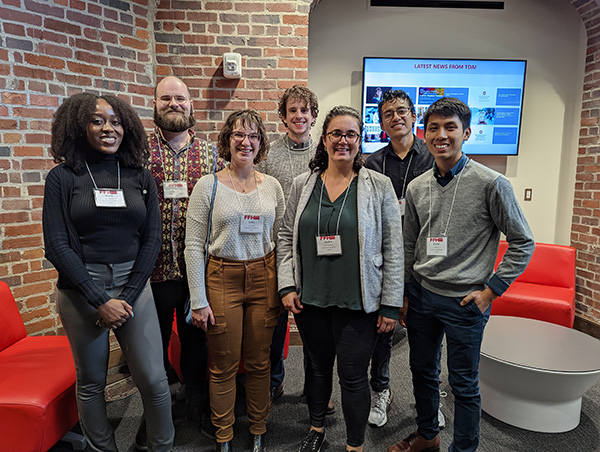At The Ohio State University, Jessica Cooperstone leads a research laboratory focused on understanding the factors that create the health benefits found in fruits and vegetables, with the aim of helping the agriculture and food industry cultivate crops that improve overall human health.
“My goal is to try to give people better options in their diet,” said Cooperstone, an associate professor with appointments in the Department of Horticulture and Crop Science and the Department of Food Science and Technology at Ohio State. “Everyone knows how hard it is to change your diet, so I want to make the foods that people already love and are already consuming better for them.”

Understanding the chemical composition of fruits and vegetables is the first step in improving their quality. Cooperstone's laboratory utilizes an analytical method called metabolomics to better understand the nutritional profile of certain crops. Through this method, they gather data on small molecules known as metabolites, which play a crucial role in the chemical reactions occurring within plants and in people. Compared to other scientific approaches that may have a narrow focus on specific compounds, metabolomic analysis aims to collect as much information as possible.
“Metabolomics generates lots of data,” Cooperstone said. “The Ohio Supercomputer Center (OSC) is crucial to our research because we need enhanced computational power to be able to weed through all this data and give us information we can work with.”
The Cooperstone Lab recently examined the health impacts of the most consumed fruit in the United States, the apple. Using OSC’s resources, the lab has been analyzing the complex associations between an apple’s genetics and the metabolites found within the species. This data can then be used to aid the process of breeding apples that are not only healthier but also taste and look better as well.
In other research projects Cooperstone is looking beyond crop enhancement to focus on how certain metabolites can improve human ailments such as inflammation and high cholesterol.
One of these projects examines how lycopene, the red pigment found in tomatoes, impacts inflammation. The lab conducted an experiment in which researchers fed one group of participants yellow tomatoes and another group naturally occurring mutant tomatoes with three times more lycopene. By tracking markers of inflammation, scientists can begin to understand the impact of lycopene on the body. The research could help lead to the intentional breeding of tomatoes with high lycopene to create a variety that could reduce inflammation.
Looking forward, Cooperstone plans to continue working with OSC to better understand how genetics and environmental factors affect the accumulation of beneficial compounds in plants and how those foods affect human health.
By Kiah Easton
About OSC: The Ohio Supercomputer Center (OSC) addresses the rising computational demands of academic and industrial research communities by providing a robust shared infrastructure and proven expertise in advanced modeling, simulation and analysis. OSC empowers scientists with the services essential to making extraordinary discoveries and innovations, partners with businesses and industry to leverage computational science as a competitive force in the global knowledge economy and leads efforts to equip the workforce with the key technology skills required for 21st century jobs.